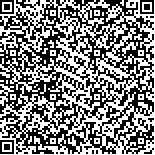| 摘要: |
| 目的 土壤指标是耕地质量分等的依据,其空间异质性和空间自相关性对土地整治分区,以及土地平整工程中的表土剥离、移土培肥和土壤改良等关键技术的实施都具有重要作用。方法 文章以渝西丘陵区的典型基本农田建设区为研究区,综合运用地统计学与Kriging插值法研究0~20cm、20~40cm和40~60 cm土层土壤有机质(SOM)的空间异质性,结合全局和局部空间自相关分析法分析各土层SOM的空间自相关性,并基于LISA聚类图进行SOM分区,进而提出土地整治的应用建议。结果 (1)研究区3层SOM平均含量处于全国第二次土壤普查土壤养分分级标准的4级,为中等水平。(2)20~40 cm土层SOM的最优模型为球面模型,其余两层均为高斯模型,3层SOM均属于中等变异,受结构性和随机性因素的共同影响,在空间上呈不规则的斑状与块状分布。(3)3层SOM均表现为显著的正空间自相关性及空间集聚特征,高—高(HH)集聚区分布在平坝与丘间谷地,主要为水田,这与水田更有利于SOC的贮存和提高土壤的固碳能力有关,其次为旱地;低—低(LL)集聚区主要分布在南部丘陵区,土地利用类型表现多样化,故丘陵区需重视土壤改良。(4)以表层SOM空间自相关分布特征为主,中、下层为辅,将研究区划分为高SOM集聚区、表层高SOM集聚区、低SOM集聚区和SOM随机分布区4个分区,根据不同分区间SOM含量差异和空间集聚特征,提出了不同的土地整治建议。结论 研究结果体现了SOM含量在剖面和水平空间上高值与低值的集聚特征,更有利于针对性地采取土地整治措施,可作为土地整治分区的重要参考。 |
| 关键词: 土壤有机质 克里格插值 空间自相关 农村土地整治 农田 |
| DOI:10.7621/cjarrp.1005-9121.20220325 |
| 分类号:F301.2 |
| 基金项目:国家科技支撑计划课题“西南睦边扶贫区基本农田建设技术研究与示范”(2015BAD06B04);重庆市研究生科研创新项目“西南丘陵区典型种植模式对基本农田建成初期土壤质量的影响研究”(CYS18104) |
|
| SPATIAL HETEROGENEITY AND ZONING OF SOIL ORGANIC MATTER BASED ON GEOSTATISTICS AND SPATIAL AUTOCORRELATION: A PERSPECTIVE FROM LAND CONSOLIDATION |
|
Zuo Xinhong, Lai Jiaxin, Liu Feng, Shi Xiaojun
|
|
College of Resources and Environment, Southwest University, Chongqing 400715, China
|
| Abstract: |
| Soil indexes are the basis forthe quality classification of farmland,while their spatial heterogeneity and autocorrelation are of great significance to the zoning of land consolidation and the following implementation of key technologies such as topsoil stripping, fertile soil transfer and incorporation, and soil improvement in land level in operation. Selecting a typical site for investigation from the basic farmland construction area in the hilly region of Western Chongqing, this paper integrated Geostatistics and Kriging interpolation to explore the spatial heterogeneity of soil organic matter (SOM) contents in the soil layers of 0~20, 20~40 and 40~60 cm.Combining the global and local spatial autocorrelation analysis, spatial autocorrelation of SOM in each soil layer was studied,and SOM zoning was carried out based on the LISA cluster map, and then the application suggestions were proposed for land consolidation.Results showed that: (1) The average contents of SOM in the three soil layers were all graded at the level 4, a medium level of the soil nutrient classification standard of the Second National Soil Survey of China. (2) The optimal simulation for the SOM of the 20~40 cm soil layer was fitted to a spherical model, and the remaining two soil layers were optimally fitted as Gaussian models.All three layers of SOM were observed to be moderate variability, presenting an irregular patchy and blocky distribution in space due to the combined effects of structural and random factors.(3) The SOM in the three soil layers showed significant positive spatial autocorrelation and agglomeration. The high—high (HH) cluster regions were located in the plain and valley with paddy fields, which was related to the high ability of carbon fixation and soil organic carbon (SOC) storage for paddy fields, followed by dry land. While the low—low (LL) cluster regions mainly distributed in the southern hilly areas with diverse land use types. Therefore, more attention should be paid to soil fertility and its improvement in the hilly areas. (4) Based on the spatial autocorrelation characteristics of SOM in the top soil layer, supplemented by the other two soil layers, the study area could be divided into four zones: high SOM agglomeration subarea, high SOM agglomeration of top soil subarea, low SOM agglomeration subarea and SOM random distribution subarea. According to the differences in SOM contents and spatial agglomeration characteristics among different zones, pertinent and detailed land consolidation suggestions were made for land consolidation.In summary, the results reflects the agglomeration characteristics of SOM contents in the soil profile and horizontal space, which are conducive to the formulation of land consolidation measures and may serve as important reference for land consolidation zoning. |
| Key words: soil organic matter Kriging spatial autocorrelation rural land consolidation farmland |

